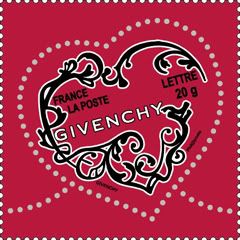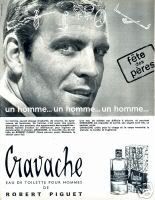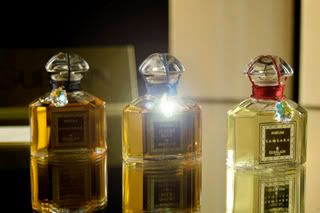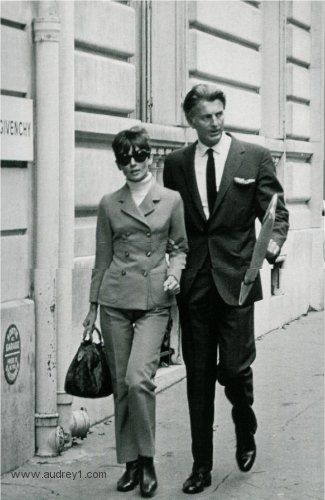
Vetiver seriously entered the consciousness of the West at some point in the 19th century, along with its brotherly Indian counterpart patchouli (brought to England in 1850), as exotic plants that smell good and keep precious silk cloths free of insects (nevertheless, vetiver iteself is not immune to the occasional beetle and to termites, in arid regions). Their noli me tangere soft message to moths and other pests made them valuable and prized and their exotic ancenstry the topic of romantic daydreaming about the edges of the Empire on Which the Sun Never Sets.
More importantly, vetiver was purposefully collected and transplanted as a potential agricultural commodity. Like so many other species, vetiver probably formed part of the colonial economic plant exchanges and, somewhere, the records probably still exist. Though these plant exchanges began in earnest around 1500, and continued an ancient tradition, two "hard" dates stand out: 1809 and 1843. In 1809, the first chemical analysis of vetiver oil was done in France on extracts from roots imported from the Indian Ocean island of Réunion, where vetiver is not native. Second, since 1843 a vetiver perfume called Kus Kus has been produced continuously in New Orleans, Louisiana, which in 1803 was purchased from the perfume-loving French by the recently independent United States, where perfumery was then considered elitist and undemocratic. Vetiver occurs in all the old French colonies, and it most likely arrived in Louisiana when it too was French ... vetiver is still most-popular there among people of French descent. The important point is that by 1843, at the very latest, vetiver was in Louisiana at the extreme terminus of global trade routes, up a river as far from home as on earth vetiver could be.
Unlike sugarcane and citrus and other Asiatic plants, Spanish scholars of the Islamic Moors have found no evidence of vetiver arriving in Europe from the Moghul Empire or earlier via greater Arabia and North Africa (and thence to the New World following the Conquistadors and their multitude of plant introductions). In fact, the one place on earth in which vetiver seems historically scarce to non-existent is the fragrance-loving Middle East and North Africa. By one hundred years ago, vetiver seems to have been fairly uniformly distributed, although perhaps thinly, across the tropics, occurring in most if not all countries. It is possible that the ‘Sunshine’ genotype was then reselected in the World War II period as a "strategic material" for perfumes, which is why we now find it almost everywhere[1]
However the story of vetiver-focused fragrances coincides with the modernisation of fragrance wearing and the artificial segregation of feminine and masculine fragrances after WWI. With its fresh, earthy and sometimes woody aroma, vetiver soon became a signal of masculinity. Although the 20s and 30s were
les années folles when any bender of societal mores was seen as adventurous, daring and to be tentatively embraced if one could (enter the androgynes), the more conservative times that followed WWII and
the advent of the New Look prescribed clear-cut roles: women impecably turned out, talons painted and not a hair out of place, but with a roast ready in the oven and smiling, well-behaved kids in the nursery; men suave in their conservative suits and modest ties, men about business with attache at hand, clean-shaven and well-trimmed on the nape of their fedora-adorned head, a Technicolor vision in 3D.
Those were the 50s!
It might very well be that those women were secretly lamenting their crushed dreams and the hole of fulfilment in their personal lives like a vignette from
Pleasantville or a Douglas Sherk melodrama; those men might just be travelling salesmen or con-men, even Cold War agents, clad in their anonymous dark suits, in the pursuit of atomic-bomb data gathering. Never mind; their perceived image will be forever be impecably put-together, down to the last detail, combed and buffed and shining like a new Cadillac in pastel colours smirking at you from across the street.
It was at that precise moment in time when classic vetiver fragrances encapsulated all the desirable qualities of this solid, dependable manhood, minus any really sinister touch but not without their own shade of doubt like one encounters upon viewing something that is suspect of being too good to be true. In a way vetiver-focusing fragrances were a natural progression from classic Eaux de Cologne in that they smelled good, made you feel fresh and were a seal of respectability in most millieux, but not without their own little twist deep down.
Vétiver by Creed was a pre-cursor, coming out in 1948. The three most classical and stellar however had always been the ones under the names of Carven, Givenchy and Guerlain.
One of the first
soliradix vetivers was
Vetiver by
Carven, issued in 1957. Its fresh character bode well with a generation that was optimistic after the vagaries of war, especially in view of the scandalous technological advances and eager to present a fresh outlook on life.
I didn't have the good fortune to smell the original, as it was so far back before my time and although I had a grandmother who wore Carven's
Ma Griffe faithfully, my grandfather was loyal to fine fragrances by other houses (notably
Givenchy's Gentleman in later years). Therefore it would be difficult to imagine the depth and clarity of the vintage composition going by only the rather pale and limp-wristed version that is circulating now -although pleasantly fresh, it doesn't ring a bell as one of the three greatest classic Vetivers.
Notes for Carven Vetiver:lemon, lavender, jasmine, vetiver.
Hubert de Givenchy issued his own take on the refreshing earthiness of vetiver two years later, in 1959. A masculine so chic and so straight-foward to the nature of the material itself that it became his own personal favourite and a beacon in the world of perfumery. Luca Turin in his NZZ Folio column ("Grass Roots") had stated a propos:
"Experts agree that the best classical vetiver of all time was Givenchy’s, which never sold well but was kept in production because Hubert de Givenchy wore it. When he passed away, so did the fragrance. Next best was a tie between the strikingly fresh and carefree Carven and the excellent, darker and richer Guerlain. Then came the Lanvin, a bit more cologne-like, and all sorts of no-holds-barred vetivers from niche firms".
He swiftly corrected the mistake in his
Perfumes, the Guide, though, while talking about the re-issued fragrance: Hubert de Givenchy hasn't passed away just yet, thank heavens, but he retired from his house in 1995, sadly marking
Vétyver's discontinuation. According to Hubert's nephew, although the fragrance was greatly respected among connoiseurs, it was a slow seller and was only kept in production for the sake of his uncle.

Luckily, after 12 years, the re-issue of Givenchy
Vétyver in the line
Les Parfums Mythiques (relaunched classics in new uniform packaging) is reputedly excellent as it always has been; cause for rejoice among the many perfumephiles who cherish the precious tradition as well as the seal of approval communicated by Turin!
The classic, an understated, well-blended, both classic and classy fragrance starts with citrusy, cooling vetiver quickly segueing to a dusty, smokey rooty aroma, due to its use of three different varieties of the roots. It remains soft, discreet, understatedly luxurious and patrician always, mirroring its patron Hubert de Givenchy ~a man who when interviewed by Harper's Bazzar upon his retirement had exorcised vulgar modern practices with this sad -and very truthful- eulogy:
"Sure, it is head-turning,but one could not step out of the house like that. It's a false image. Balenciaga always told me, 'Hubert, the most important thing when dressing your clients is to be honest.' He was a man with total integrity. We made dresses that women could wear. Today we make dresses to sell handbags, shoes, accessories. When you go down the Rue du Faubourg Saint-Honoré, you see only store windows filled with sacks and shoes. What does that mean? I'll tell you what it means: There is no fashion."
.
Notes for Givenchy Vétyver:Top: bergamot and vetiver
Middle: coriander and vetiver
Base: sandalwood and vetiver.
Givenchy
Vétyver retails at $65 for a 100ml/2.4oz bottle.
You can read a detailed review of the re-issue on
Pere de Pierre.
And then, just when the 50s were slowly exhaling and with
Jean Paul Guerlain freshly on the reins of the historical house, Guerlain came up with their own version,
Vétiver, which was to become
the classic of the classics. It sold so forcibly well, that women everywhere were usurping it from the husbands' and boyfriends' dressers to don it on their own soft curves. But more on that shortly on a seperate review!
Pic of Russell Crowe in film
Rough Magic. Pic of Givenchy
Vetyver bottle and box courtesy of Fragrantica.
[1]source: the
Vetiver Network
.jpg)
















.jpg)







.JPG)
.jpg)



